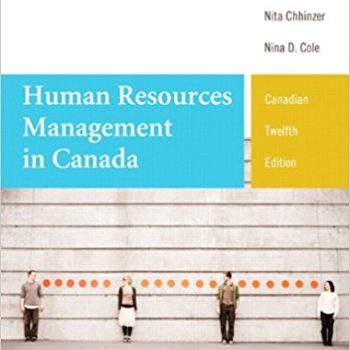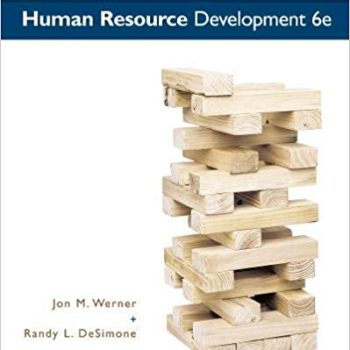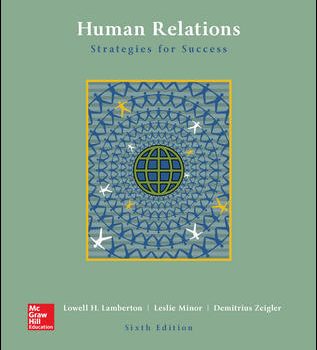Test Bank Human Relations 6th Edition By Lowell
Chapter 05 Motivation: Increasing Productivity
1 To be truly motivated means feeling a desire to do whatever task needs to be accomplished to reach a goal or purpose.
TRUELearning Objective: 05-01 Define motivation.2.A good organizational climate is limited to people getting along well.FALSELearning Objective: 05-01 Define motivation.3.To increase productivity in an organization, job morale has to be sacrificed.FALSELearning Objective: 05-01 Define motivation.4.An effective organizational climate allows people to work to their full potential without becoming a threat to others.TRUELearning Objective: 05-01 Define motivation.5.Employees do not have opportunities to suggest changes in an organization.FALSELearning Objective: 05-01 Define motivation.6.In the context of work motivation, extrinsic factors often provide more powerful motives than intrinsic factors do.FALSELearning Objective: 05-01 Define motivation.7.Working does not allow one to satisfy one’s intrinsic motives.FALSELearning Objective: 05-01 Define motivation.8.Economic need is the primary motivator toward work.TRUELearning Objective: 05-01 Define motivation.9.Researchers have found that professional women who are balancing the demands of work and families are more likely to quit their jobs for intrinsic reasons.TRUELearning Objective: 05-01 Define motivation.10.The amount of creativity allowed, the degree of responsibility, and the satisfaction of helping others are the extrinsic motivators of a job.TRUELearning Objective: 05-03 Explain behavior-based theories of motivation.11.People with a strong work ethic believe that working is immoral and lazy.FALSELearning Objective: 05-01 Define motivation.12.Maslow’s hierarchy of needs theory of motivation assumes that when a need has been satisfied, it will no longer motivate a person’s behavior.TRUELearning Objective: 05-02 Explain need-based theories of motivation.13.According to Maslow’s hierarchy of needs theory of motivation, people tend to satisfy their needs in a certain order: physiological needs, safety and security, belongingness and love, esteem, and finally, self-actualization.TRUELearning Objective: 05-02 Explain need-based theories of motivation.14.According to Maslow’s hierarchy of needs theory of motivation, esteem needs include recognition from peers and colleagues.TRUELearning Objective: 05-02 Explain need-based theories of motivation.15.In the context of Abraham Maslow’s hierarchy of needs theory, new employees are more likely to be working to meet esteem needs, while more established senior employees are likely motivated by security and safety needs.FALSE









Reviews
There are no reviews yet.